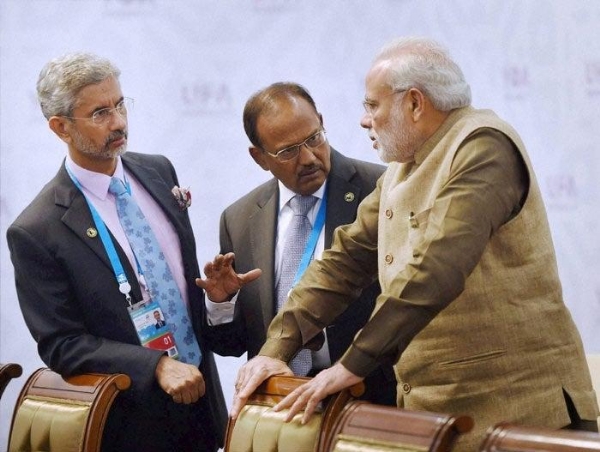NB Twitter Scan | Modi government's Middle East strategy
Last week, Axios reported that the National Security Advisers of India, America, Saudi Arabia & the UAE were set to hold a key meeting.
Total Views |
This article is based on a Twitter thread by @MattooShashank
India is making a major geopolitical gambit to connect the Middle East. If India's plan succeeds, it may unleash billions in trade. It would help counter China's influence & secure India's reputation as a player in the region.

Last week, Axios reported that the National Security Advisers of India, America, Saudi Arabia & the UAE were set to hold a key meeting. The four countries are planning a major connectivity initiative to link countries in the Middle East. Axios reported that the four countries want to build railway networks to link Gulf (eg: UAE, Saudi) & Levant (eg: Lebanon, Syria) countries. These rail networks will then extend to sea ports which will boost economic linkages with India. The idea initially came from Israel.
India is making a major geopolitical gambit to connect the Middle-East
— Shashank Mattoo 🇮🇳 (@MattooShashank) May 8, 2023
If India's plan succeeds, it may unleash billions in trade
It would help counter China's influence & secure 🇮🇳's reputation as a player in the region
🧵on the economic master plan you need to know about pic.twitter.com/2hBQlxoEvs
India also brings its "railway diplomacy". India currently executing railway projects in Mozambique, Mauritius, etc. RITES, an Indian public sector firm, has worked in 55 countries including in the Middle East. India is among few countries w. the expertise to build rail infra abroad.
US National Security Advisor Jake Sullivan met with Saudi Prime Minister and Crown Prince Mohammed bin Salman, UAE National Security Advisor Sheikh Tahnoon bin Zayed Al Nahyan, and National Security Advisor of India Ajit Doval on May 7 in Saudi Arabia ‘to advance their shared… pic.twitter.com/2O2pfKaHpo
— Kanchan Gupta 🇮🇳 (@KanchanGupta) May 8, 2023
This ambitious project matters for three reasons:
1. China
This 4-nation infra alliance will help counter China’s infrastructure-building efforts in the region. From 2005 to 2022, China's investments and contracts in the Middle East and North Africa have totaled 273 billion dollars. A big chunk of those investments have been in infrastructure Major regional powers have signed on to China’s Belt and Road Initiative, which is a trillion-dollar project to build infra & link the Middle East to China’s economy. India and the US have seen China's increasing influence with concern.
2. Reputation
India’s diplomatic reputation would be enhanced by the successful execution of such an ambitious project. The Middle East is in search of new diplomatic partners as it looks to move away from its traditional reliance on the US. Closer ties with China are an example. Eg. China brokered a normalization agreement between Iran and Saudi Arabia in March. This project could be a key opportunity for New Delhi to establish itself as a serious power in the region. It also complements existing partnerships like I2U2 w. Israel, US & UAE.
3. Trade
India has wanted to improve connectivity with West Asia. With overland routes running through Pakistan and Afghanistan, maritime connectivity remains the only viable option available to New Delhi. This connectivity will create new avenues for India’s economic growth.
The Middle East is also going through a strategic shift. Major powers are settling long-standing conflicts in order to build peace & economic ties. Even Iran & Saudi Arabia are now talking about trade. This connectivity plan may be a good way to latch onto regional aspirations.
However, some caution, while the project is exciting and ambitious, the exact details are sketchy. Grand connectivity ambitions across borders, particularly in a complicated region like West Asia, can run into political trouble. The exact scale of the project will be important. Building a transnational railway project, even with US & Emirati resources, may be too difficult. India's recent experiences in Mauritius (metro project) are not the same as a grand pan-regional initiative. Major transnational projects, like INSTC, have largely disappointed. The timelines would also matter. More than 20 yrs after International North-South Transport Corridor was unveiled, key gaps remain. Involving other infra players like Japan may be necessary.

